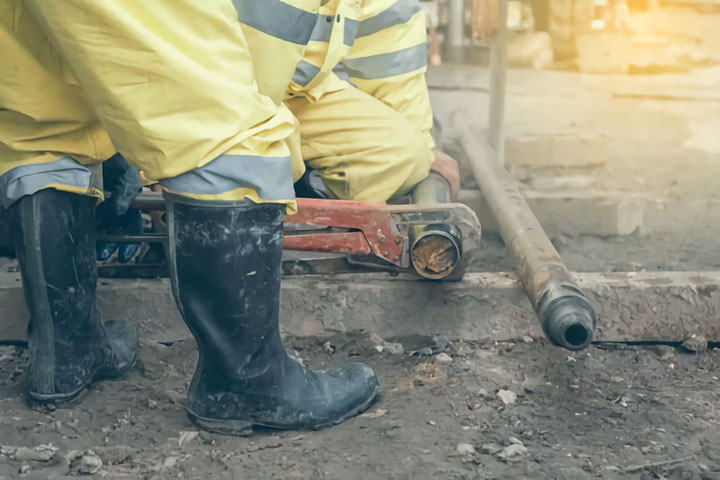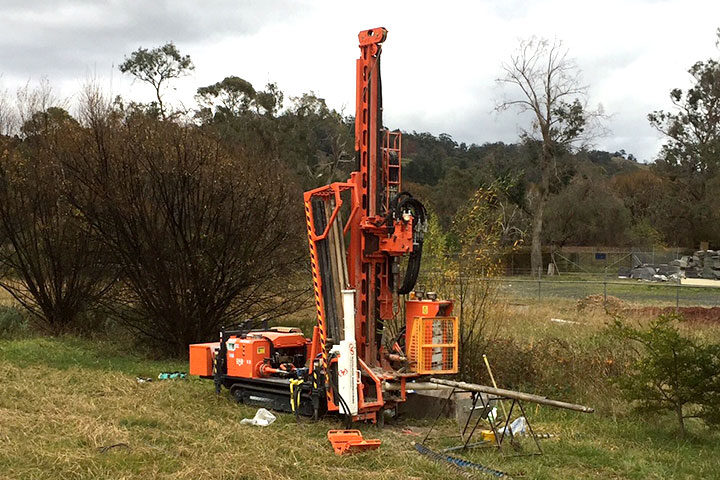
Reverse circulation drilling is an Australian invention. It’s a form of percussion drilling that works best when the ground you need to penetrate is rocky or deep.
There are two methods of RC drilling. Flooded reverse uses water by flooding the hole and stabilising it, whereas air assisted reverse uses a small airline to lift the cuttings. The method you need depends on the job.
With dual-wall drill rods and inner and outer tubes, a continuous flow of air blasts down the outer tube while the piston-driven hammer drives the tungsten steel drill bits into rock. The drill cuttings are then carried to the surface through the inner tube into a cyclone and split into sample bags.
Why might you need to use this method of drilling? The positive aspects of reverse circulation drilling have made it popular for jobs such as grade control, mineral exploration and for drilling associated with an exploratory oil well.
Let’s take a look at the three reasons RC drilling is one of the most common methods across Australia.
1. Drill Down Costs
Starting with the economical benefit, then one of the major assets you have to consider is the lower cost that comes with using reverse circulation drilling.
Taking into account that the method is less complex and that you drill to deeper depth in less time, you get higher rates of production. This means your costs are coming in at 25-40% cheaper than with diamond drilling.
Another way you’ll save money by using RC drilling is through the sampling. With the simplified system, there’s less handling and quicker turnaround. Use the method correctly and you’ll find yourself cutting down on overall drilling costs with the added benefit of a positive environmental impact.
2. Straight to Sample Analysis
When the samples are blasted to the surface by the method of RC drilling, the rock chips dry out from the compressed air and then by the inner tube, they are sent through a diverter into a sample hose and collected in a sample bag.
Because the compressed air is so powerful, it can retrieve samples from hundreds of metres down, and with reverse circulation drilling, the samples will be of high quality. The rock cuttings are collected with an accurate location and depth, which will make it easier to find the mineral deposits.
Another benefit of this method is the purity of the sample. inside the inner tube, the sample is protected from contamination.
This is why RC drilling is the preferred approach for grade control. With the samples sent directly to the lab from the drill, the faster turnaround time makes it an asset.
3. Rough Environments
The speed with this method doesn’t only come from the sampling, though. As the reverse circulation drill bits are so strong, it’s possible to drill down hundreds of metres more per day than you can do with diamond drilling.
In general RC drilling is compatible with harsher terrain, and because it doesn’t require as much water, it’s an ideal choice if the area you need it for is remote.
Bear in mind, that with how quickly you’ll be reaching great depths you will need to plan well ahead of starting.
Reverse Circulation Drilling Is Better
If you need to drill a large-diameter hole through rough terrain, and if you need your drill to hit 500m then that is what RC drilling does best.
You’re saving on man-hours at the drill, drilling quicker and speeding up sampling turnaround with less handling. This is why reverse circulation drilling is such a popular form of geotechnical drilling.
At BG drilling we service the entire eastern area of Australia, and in all the areas we work, quality is everything. Contact us to discuss our plan for any job you need.



